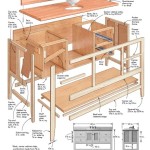How To Remove a Bathroom Drop-In Sink
Removing a bathroom drop-in sink can be a necessary task for various reasons, including replacing it with a new model, repairing the countertop, or addressing plumbing issues. This article provides a comprehensive guide to safely and effectively removing a drop-in sink from a bathroom countertop. The process requires careful preparation, the right tools, and a systematic approach to avoid damaging the sink, countertop, or plumbing.
Before commencing any work, it is crucial to prioritize safety. Ensure the water supply to the sink is completely shut off. This typically involves locating and closing the shut-off valves under the sink. If these valves are absent or malfunctioning, the main water supply to the house must be turned off. Secondly, disconnect the electrical supply if the sink has any electrical components, such as a garbage disposal or a built-in light. Safety goggles and gloves are also recommended to protect the eyes and hands throughout the process.
Key Point 1: Preparation and Tool Gathering
Proper preparation is paramount before beginning the sink removal. This involves gathering the necessary tools and preparing the workspace. The required tools typically include:
- A basin wrench: This specialized wrench is designed to reach and loosen the nuts that secure the faucet to the sink. Its long handle and pivoting jaws make it ideal for working in tight spaces under the sink.
- Adjustable wrench or pliers: These are used to disconnect the water supply lines from the faucet.
- Screwdrivers (both Phillips head and flathead): Screwdrivers are needed for removing various fasteners, such as those holding the drain assembly together and any mounting clips securing the sink to the countertop.
- Utility knife or putty knife: A utility knife is useful for scoring through any caulk or adhesive that is sealing the sink to the countertop. A putty knife can be used to gently pry the sink loose after the caulk has been cut.
- Bucket and towels: A bucket is required to catch any water that may remain in the pipes, and towels are essential for cleaning up spills.
- Safety glasses and gloves: As previously mentioned, these are crucial for protecting the eyes and hands.
- Work light: Adequate lighting is essential for working in the dark space under the sink.
- A garbage bag or container for disposing of old parts and debris.
- Painter's tape: This can be used to protect the countertop around the sink edge from scratches during the removal process.
After gathering the tools, prepare the workspace. Clear out any items stored under the sink to provide ample room to maneuver. Place a drop cloth or old towels on the floor to protect it from water and debris.
Key Point 2: Disconnecting Plumbing and Fixtures
The next step involves disconnecting the plumbing and fixtures connected to the sink. This is a critical step that requires careful attention to detail to avoid any water damage or plumbing complications.
1.
Disconnect the Water Supply Lines:
Locate the shut-off valves under the sink, either at the wall or on the supply tubes themselves. Ensure they are completely closed. Place a bucket under the supply lines to catch any remaining water. Use an adjustable wrench or pliers to disconnect the supply lines from the faucet tailpieces. If the supply lines are old or corroded, it may be necessary to replace them when installing the new sink.2.
Disconnect the Drain Assembly:
The drain assembly typically consists of the tailpiece, P-trap, and drainpipe. Loosen the slip nuts that connect these components. Start with the slip nut connecting the tailpiece to the P-trap. Have the bucket ready to catch any water trapped in the P-trap. Once the water has drained, disconnect the P-trap from the drainpipe leading to the wall. If the drainpipe is made of PVC, it may be glued together. In this case, it may be necessary to cut the pipe using a PVC cutter or saw. Leave enough of the pipe remaining to allow for easy reconnection to the new drain assembly.3.
Remove the Faucet:
Use a basin wrench to loosen the nuts that secure the faucet to the sink. These nuts are typically located on the underside of the sink, near the faucet base. Once the nuts are loosened, carefully lift the faucet from the sink. If the faucet has any electrical connections, such as for a sensor or water temperature display, disconnect them before removing the faucet.4.
Disconnect any Additional Fixtures:
If the sink has any other fixtures, such as a soap dispenser or a sprayer, disconnect them as well. This typically involves loosening nuts or screws that hold them in place.After disconnecting all plumbing and fixtures, thoroughly dry the area around the sink to prevent any water damage.
Key Point 3: Removing the Sink from the Countertop
Once the plumbing and fixtures have been disconnected, the final step is to remove the sink from the countertop. This requires carefully breaking the seal between the sink and the countertop and then lifting the sink out of the opening.
1.
Cut the Caulk or Adhesive:
Use a utility knife or putty knife to carefully score around the perimeter of the sink where it meets the countertop. The goal is to cut through any caulk or adhesive that is sealing the sink to the countertop. Apply steady pressure and work slowly to avoid damaging the countertop. If the caulk is particularly stubborn, it may be necessary to use a heat gun to soften it. However, exercise caution when using a heat gun near flammable materials.2.
Locate and Remove Mounting Clips:
Some drop-in sinks are secured to the countertop with mounting clips. These clips are typically located on the underside of the sink, around the perimeter. Use a screwdriver to loosen the screws that hold the clips in place. Once the screws are loosened, the clips can be removed.3.
Gently Pry the Sink Loose:
After the caulk has been cut and the mounting clips have been removed, gently pry the sink loose from the countertop. Use a putty knife or a thin pry bar to carefully lift the sink from the countertop. Work slowly and apply even pressure to avoid cracking the sink or damaging the countertop. If the sink is particularly stuck, it may be necessary to tap it gently with a rubber mallet to loosen it.4.
Lift the Sink Out:
Once the sink has been loosened, carefully lift it out of the countertop opening. It may be helpful to have a second person assist with this step, especially if the sink is heavy. Be mindful of the weight distribution and lift with the legs to avoid back strain.5.
Clean the Countertop:
After the sink has been removed, clean the countertop around the opening. Remove any remaining caulk or adhesive using a scraper or solvent. Inspect the countertop for any damage and make any necessary repairs. This is also a good time to thoroughly clean and disinfect the countertop.6.
Inspect the Sink Opening:
Check the sink opening in the countertop to ensure it is clean, level, and free of any obstructions. This will help ensure that the new sink will fit properly.7.
Dispose of the Old Sink:
Properly dispose of the old sink. Depending on the material and condition of the sink, it may be recyclable or require disposal at a designated waste facility.Removing a bathroom drop-in sink requires patience and attention to detail. By carefully following these steps, one can safely and effectively remove the sink without damaging the surrounding fixtures or plumbing. Remember to prioritize safety throughout the process and to take your time to avoid mistakes.

Drop In Bathroom Sink Replacement

Drop In Bathroom Sink Replacement

How To Replace A Drop In Bathroom Sink Step By

Drop In Bathroom Sink Replacement

Diy Guide Find Out How To Replace A Bathroom Sink Ron Hazelton

How To Replace A Drop In Bathroom Sink Step By

Ge Sealants How To Install A Drop Sink


How To Get Something Dropped Down Sink Bobby L Greene

How To Remove A Drain From Bathroom Sink Inside Out Property Inspectors
Related Posts







